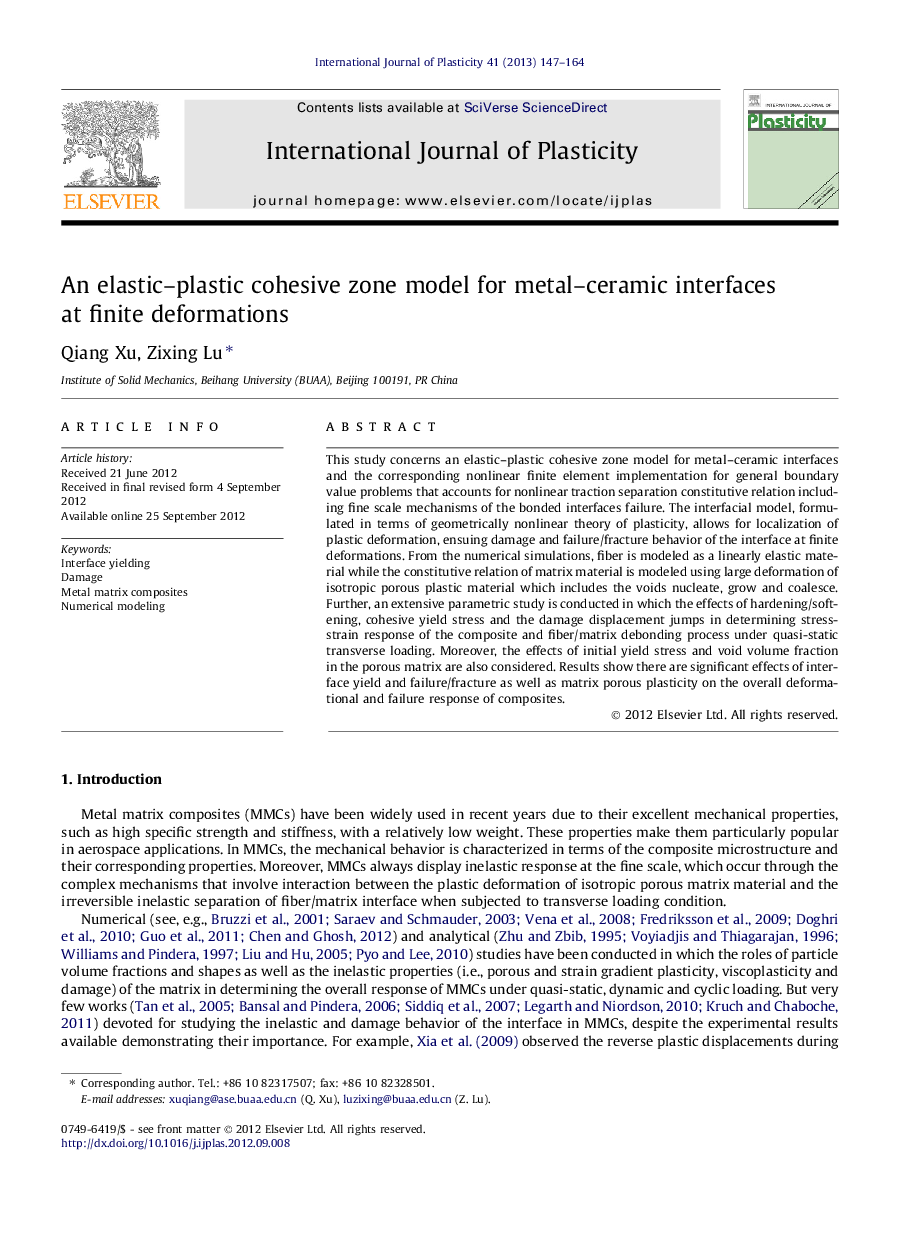| کد مقاله | کد نشریه | سال انتشار | مقاله انگلیسی | نسخه تمام متن |
|---|---|---|---|---|
| 789129 | 1465632 | 2013 | 18 صفحه PDF | دانلود رایگان |

This study concerns an elastic–plastic cohesive zone model for metal–ceramic interfaces and the corresponding nonlinear finite element implementation for general boundary value problems that accounts for nonlinear traction separation constitutive relation including fine scale mechanisms of the bonded interfaces failure. The interfacial model, formulated in terms of geometrically nonlinear theory of plasticity, allows for localization of plastic deformation, ensuing damage and failure/fracture behavior of the interface at finite deformations. From the numerical simulations, fiber is modeled as a linearly elastic material while the constitutive relation of matrix material is modeled using large deformation of isotropic porous plastic material which includes the voids nucleate, grow and coalesce. Further, an extensive parametric study is conducted in which the effects of hardening/softening, cohesive yield stress and the damage displacement jumps in determining stress-strain response of the composite and fiber/matrix debonding process under quasi-static transverse loading. Moreover, the effects of initial yield stress and void volume fraction in the porous matrix are also considered. Results show there are significant effects of interface yield and failure/fracture as well as matrix porous plasticity on the overall deformational and failure response of composites.
Figure optionsDownload as PowerPoint slideHighlights
► Nonlinear traction–separation law including fine scale mechanisms is developed.
► The cohesive model allows for plastic and damage behavior at finite deformations.
► Fiber/matrix debonding process under quasi-static transverse loading is studied.
► Large deformation of isotropic porous plastic matrix material is considered.
Journal: International Journal of Plasticity - Volume 41, February 2013, Pages 147–164